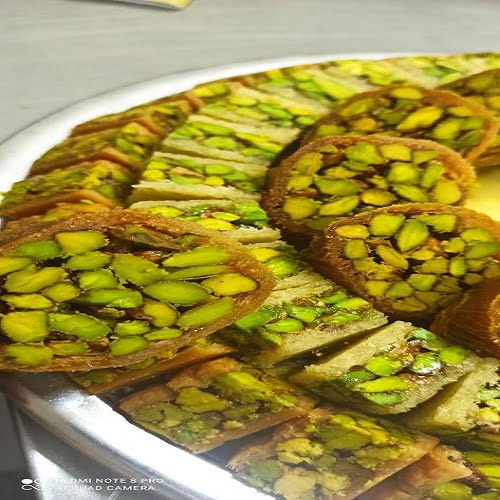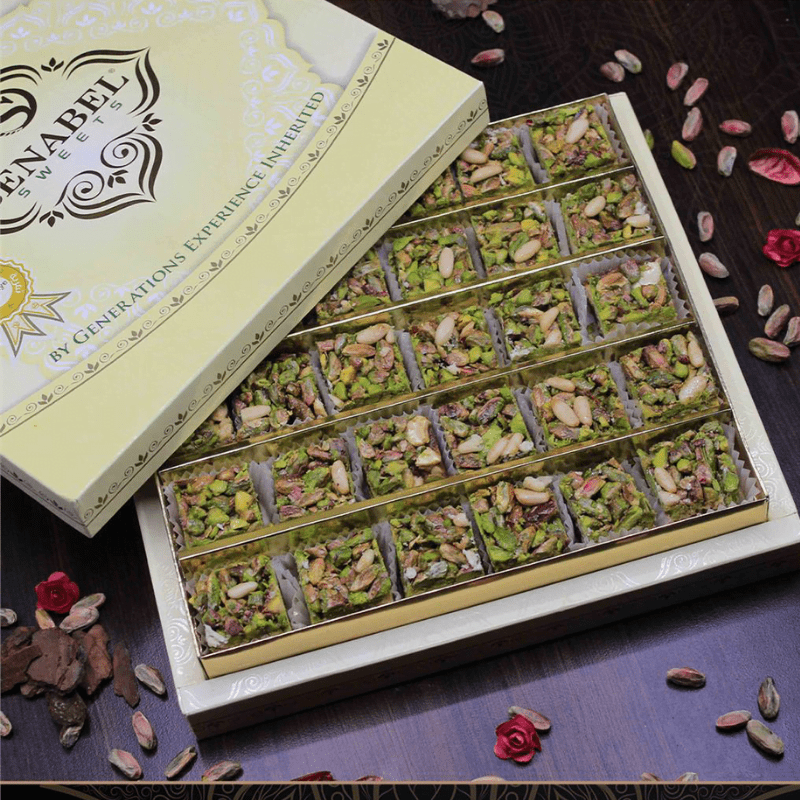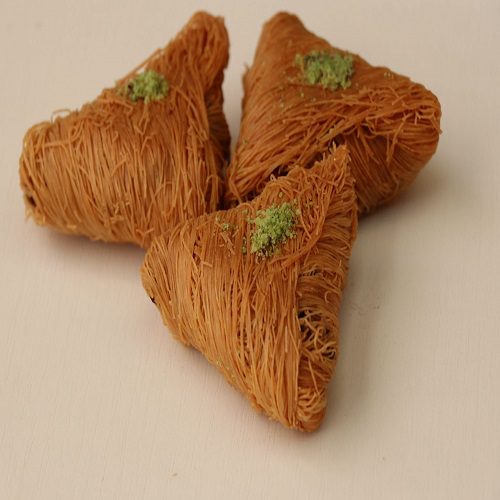Discover the types of kunafa, the master of sweets
Kunafa is one of the types of Arab oriental sweets that have been greatly associated with the Arab peoples, especially with being one of the main desserts in the holy month of Ramadan, and it is also the one that is frequently prepared on various occasions, and it provides the body with energy and calories; Due to its large amounts of sugar, vitamins, in addition to multiple proteins, it is also considered the master of sweets that have a wide popular base and a large audience, due to the diversity and difference between its various internal fillings that suit different tastes.
History and Origin of Kunafa
Most accounts indicate that Kunafa was discovered during the era of the mandate of "Muawiya bin Abi Sufyan" at the time of his mandate over the Levant, and it is said that he was the first to eat it and that was at the time of Suhoor in the holy month of Ramadan, and this is due to the fact that Muawiya bin Abi Sufyan was very hungry and thirsty during the fasting hours, so the kunafa was a medical recipe given to him by "Muhammad bin Athal the doctor" in order to prevent him from feeling hunger and thirst, and the kunafa was a specially made dessert for Muawiya bin Abi Sufyan, and that is why it was initially called "Muawiya's kunafa".
How to make kunafa in the olden days
The manufacture of kunafa differed in the past from its current manufacture, as in the past they used physical cones from which the dough could seep onto a flat sheet and was leveled by placing the sheet on charcoal or firewood, and some people used to go to the kunafa maker carrying their own ghee and sugar to make it for them.
Types of kunafa
Coarse kunafa : The kunafa dough used is long and slightly rough in texture.
Soft kunafa : It is that kunafa that has soft threads, that is, its dough is always soft to the touch, and consists of fine semolina, ground sugar and water.
Brominated kunafa : It is the one in which the kunafa is divided into long pieces and has a chopped character and an internal filling.
Discover the shapes and fillings of kunafa
Kanafeh Nabulsiya (sweet cheese):
It is one of the most delicious types of kunafa, and it was known at the beginning of its manufacture in the State of Palestine and then moved to the rest of the countries, and is considered to have the same ingredients as kunafa with cream, but without the cream and with the addition of cheese for the confectionery industry.
Kunafa with cream:
It is considered one of the soft and newly famous kunafa in the form of thick fingers filled with cream and sometimes pistachios, as it consists of hair-shaped kunafa, powdered milk, starch, caster sugar, vanilla, cream, flour and ghee, and when the ingredients are mixed together you can taste the most beautiful and delicious desserts.
Kanafeh with chocolate:
It is one of the desserts that helps to fill up quickly and significantly, due to the chocolate and the heaviness of the filling, but it is one of the most delicious tastes that can be felt, and it consists of regular chocolate or Nutella in addition to the kunafa itself, ghee, sugar, flour, vanilla and the usual ingredients.
Kunafa with mango :
It is considered one of the most famous types of kunafa that has spread in recent times, which has been closely associated with the holy month of Ramadan as a gift when going to a holiday or when serving it to guests at home, it has a distinctive and excellent taste as it consists of kunafa, sugar, mango juice and mango pieces, in addition to the basic ingredients ghee, flour and vanilla.
About the history of Kunafa in different eras
Kunafa in the Fatimid Era
It was discovered during the era of the mandate of "Muawiya bin Abi Sufyan" at the time of his mandate over the Levant, and it is narrated that he was the first to eat it and that was at the time of Suhoor in the holy month of Ramadan, and this is due to the fact that Muawiya bin Abi Sufyan was very hungry and thirsty during the fasting hours and therefore the kunafa was a medical recipe given to him by "Muhammad bin Athal The doctor" in order to prevent him from feeling hungry and thirsty, and the kunafa had a great prosperity and wide fame in the Fatimid era, the kunafa was one of the sweets that was eaten throughout the year, and those who did not eat it throughout the year ate it specifically in the month of Ramadan, and since then the kunafa has been famous and closely associated with the month of Ramadan.
Kunafa in the era of Muhammad Ali
When Muhammad Ali ruled over Egypt, he went to the great-grandfather of Hajj Atriss, who was known as the most famous kanafeh in Cairo in the Sayeda Zeinab area and was called (Hajj Arafa), and he started making it again.
Learn about some of the benefits of kunafa
- The nuts that are added to kunafa are important for overall health, as they contain antioxidants, which help prevent cancer.
- They contain vitamin B and iron, both of which contribute to the formation of red blood cells, helping to prevent anemia.
- It is considered one of the desserts rich in carbohydrates, which provides the body with the energy needed to perform its daily activities.
In the end, Kunafa is considered one of the most famous Arab sweets rich in energy and calories, and Kunafa is characterized by its various forms with its delicious taste and wonderful shape in terms of color and shine, and it is considered one of the easy desserts in how to prepare it, as it needs accuracy in preparation, but it is worth the time, care and effort.





